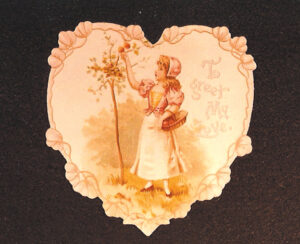 By Robert Reed
By Robert Reed Valentines are not as old as love, or even the romantic holiday itself, but they have been around for a long time.
Quite a number of authorities and historians consider Valentines to be one of the world’s oldest greeting cards, if not actually the first of their kind.
One old English custom called for the drawing of lots for lovers each Feb. 14. One person whose name was drawn was given a present and a brief written message. Eventually the drawing was expanded to include other friends and children, but the idea of written affection remained.
English author Samuel Pepys confirmed parts of the practice with his diary entry for St. Valentine’s Day of 1667: “This morning came up to my wife’s bedside (I being up dressing myself) little Will Mercer to be her Valentine, and he brought her name written upon blue paper in gold letters, done by himself, very pretty; and we were both well pleased with it. I am also this year my wife’s Valentine, and it will cost me….”
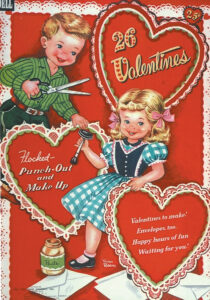 From the time of Pepys into the 18th century, most Valentines were like that offered by little Will, sometimes elegant and attractive but always homemade.
From the time of Pepys into the 18th century, most Valentines were like that offered by little Will, sometimes elegant and attractive but always homemade. The idea of extending Valentine greetings was well accepted by American colonists, who adopted it from the British. However, by the 1730s, booklets were available in the Colonies and in England to assist the writer in preparing the proper message or verse. These “writers,” like The Young Man’s Valentine Writer issued in 1797, offered quite an array of poetic prose to accompany the homemade Valentine.
By the 1750s those with romance in their hearts could also find standard-sized, gilt-edged letter paper in the marketplace. This fine paper could then be painted, pin-pricked, cut out, and folded after the prepared message was written in.
Possibly the most finely-detailed Valentines arrived with immigrants from Germany at the start of the 19th century. With them they brought the art of cutting paper Valentines with scissors, scherenschnitte, which remained popular in parts of Pennsylvania for 100 years. Such precisely-cut Valentines are considered folk art today, and displayed in many parts of the country, including the Cincinnati Art Museum in Cincinnati, Ohio.
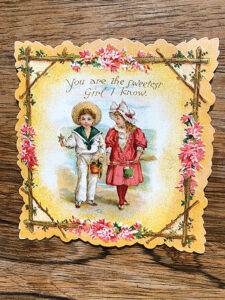 A few commercial Valentines were available from 1800 to the late 1830s, but the major market for manufactured greetings did not appear until 1840 when the Uniform Penny Postage Act was introduced in England. At last Valentines could be sent through the mails at a single uniform low rate, even including matching elaborate envelopes. Such a change created an even stronger demand for the cards, and thus an opportunity for profitable production.
A few commercial Valentines were available from 1800 to the late 1830s, but the major market for manufactured greetings did not appear until 1840 when the Uniform Penny Postage Act was introduced in England. At last Valentines could be sent through the mails at a single uniform low rate, even including matching elaborate envelopes. Such a change created an even stronger demand for the cards, and thus an opportunity for profitable production. By the 1850s lovers and well-wishers could buy “mechanical” Valentines which would move with the pulling of a tab. Others were folded to “pop-out” with a three-dimensional flare as they were opened.
Makers were also mass-producing both romantic and comicial hand-colored lithographic greetings and wood-block prints for expressing Valentine sentiments.
Surprisingly enough, both the kindly and the dastardly cards did well with the Victorian public in England and the U.S. One especially-successful maker of Valentines in the U.S. was Ester Howland of Massachusetts. From humble beginnings in the 1850s, the operation became known worldwide. Now her cards, signed with the letter H in a red heart, are highly prized by collectors.
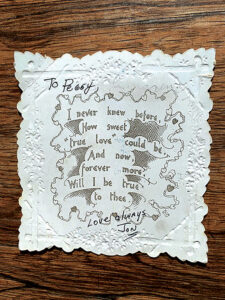 Yet with all printing and producing innovations, the need for the personal touch persisted through the entire Victorian era. “Some of the cards (of the latter 19th century) were purchased in the form of their various components and actually assembled by their senders,” notes Judith Holder, author of Sweethearts and Valentines. “Thus, one might purchase a blank card, a paper-lace frame, a picture or pictures, and a verse or motto, then glue all these together to produce one’s own specially-designed Valentine.”
Yet with all printing and producing innovations, the need for the personal touch persisted through the entire Victorian era. “Some of the cards (of the latter 19th century) were purchased in the form of their various components and actually assembled by their senders,” notes Judith Holder, author of Sweethearts and Valentines. “Thus, one might purchase a blank card, a paper-lace frame, a picture or pictures, and a verse or motto, then glue all these together to produce one’s own specially-designed Valentine.”Victorian Valentines, whether store-bought or store-bought and home-assembled, finally evolved into “elaborate products for an elaborate era,” observes Demaris Smith in Preserving Your Paper Col-lectibles. “Lace paper, machine-woven tapestries, satin pillows, parchment and many other fancies were incorporated into the designs.”
By the 1890s, mechancial cards and three-dimen-sional ones were fully available on the American market, although most of them were produced in Europe. “I have seen some (three-dimensional) with as many as seven levels when fully opened, and they are truly beautiful,” writes Joseph Raymond LeFontaine in the book Turning Paper to Gold. “They are difficult to find in good condition, and some will bring prices in the hundreds of dollars.”
The dawn of the 20th century saw the boom of dazzling new postcards printed by the millions in Germany with their ever-advancing chromolithography. Naturally that led to a corresponding “boom” in Valentine postcards. Arrival of the brightly-colored Valentine postcards on the marketplace meant mellow hearts could now dispatch both comical and sentimental greetings much easier and less expensively than ever before.
Such postcards also added to the growing public feeling that Valentines not just limited to lovers, but could be sent to mothers, grandchildren, neices, and old friends. This expanding nature of Valentine-giving led at least in part to the frequent depiction of Cupid and children on such postcards.
“Most common were depictions of childlike Cupids busily mailing, sealing or delivering valentines, bandaging broken hearts, or just shooting cannons,” notes Judith Endelman, librarian and curator of special collections at Ford Museum and Greenfield Village. Moreover, “Children appeared with great regularity on Valentine postcards—shyly kissing, winsomely dressed in foreign costume, delivering flowers or playing with Cupids.”
Of course, standard Valentines were still being produced in an assortment of styles by such commercial greats as Louis Prang, Elton and Company, and the George Whitney firm with manufactured layered, embossed, and lace cards right through the postcard craze from 1900 to World War I.
But Americans were generally attracted to the postcards. Most of them continued to be die-cut from Germany, although the work of Raphael Tuck and Sons in England was welcomed, as were the illustrations of Frances Brundage and Charles Dana Gibson.
“United States Valentines coveted by collectors mostly also fall into the period between 1900 and 1920,” according to Collectibles by Marian Klamkin. It was the time when “German cards were at thier most elaborate and a few American companies were still making beauties to celebrate the holiday for lovers.”
The market changed again in the 1920s when postcards gradually lost their luster with the public and the trend toward Valentines with their own envelopes resumed.
Various shapes and sizes from heart-shaped to full sheets have abounded ever since, and so has collecting them.
“Today’s collectors often specialize,” according to Schroeder’s Antiques Price Guide. “Comics, postcards, mechanicals, Victorian, Kewpies, Kate Greenaway characters, or those signed by a specific artists are among the many well-established categories.”

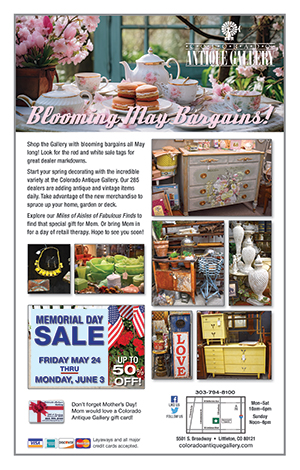

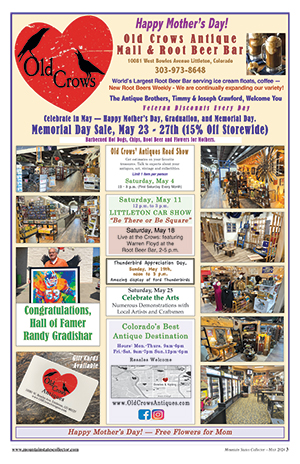
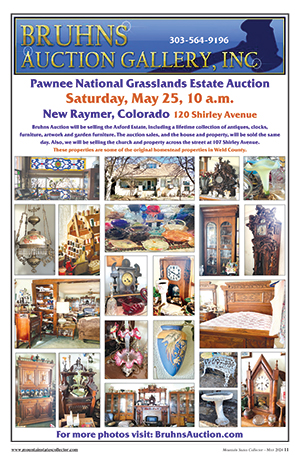












Follow Us